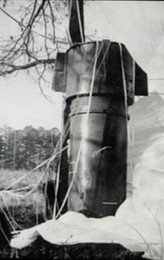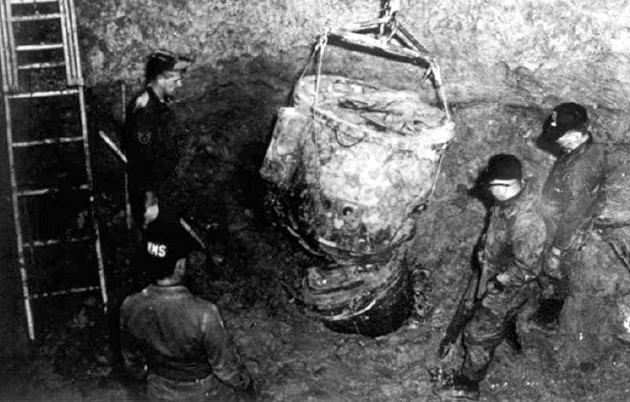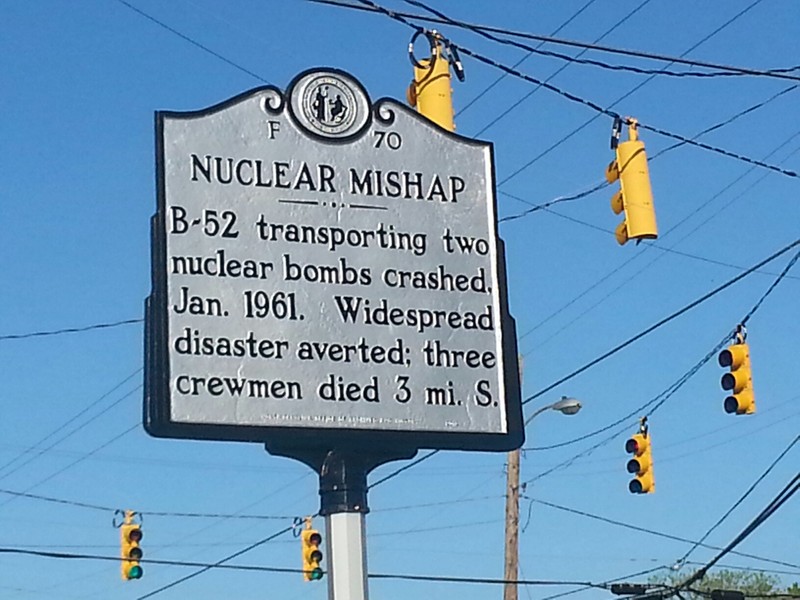Nuclear Mishap/Goldsboro B-52 Crash
Introduction
Text-to-speech Audio
Images
Unexploded MK-39 at the crash site

Recovery of the second MK-39 buried at the crash site

The historic marker is located in the center of town where more people might read it. The crash site is located three miles north of the sign.

Backstory and Context
Text-to-speech Audio
Three days after President John F. Kennedy’s inauguration, a damaged B-52 carrying two 4-megaton MK-39 nuclear bombs malfunctioned. The plane began to break apart while 8,000 feet over Eureka, North Carolina. The crew hoped to attempt an emergency landing at nearby Seymour Johnson Air Force Base. The crew of the B-52 was ordered to eject-five ejected safely-one crew member didn’t survive the landing, and two more crew members who stayed with the craft died in the resulting plane crash.
During the Cold War, U.S. military planes carried nuclear weapons each day as part of their strategy of deterrence. According to the military doctrine known as Second Strike Capability, it was imperative to have a nuclear arsenal spread throughout missile silos, submarines, and airborne craft at all times so that it would be impossible for the Soviet Union to launch a single nuclear strike that would not result in retaliation. This idea was connected to the idea of deterrence through "Mutually Assured Destruction"- a related theory of military doctrine that suggested no nation would resort to nuclear warfare if this act would result in the inevitable destruction of their own homeland.
This incident one of the closest times the United States came close to nuclear disaster during the Cold War, but there are several hundred other accidents and near-misses recorded between the start of the Cold War in 1950 and the thawing of relations between the two superpowers in the 1980s.
A portion of one of the bombs still lies buried at the crash site. The U.S. Army Corps of Engineers owns the property of the crash site where these bomb components remain. For a variety of reasons, the historical marker is located several miles from the crash site.
